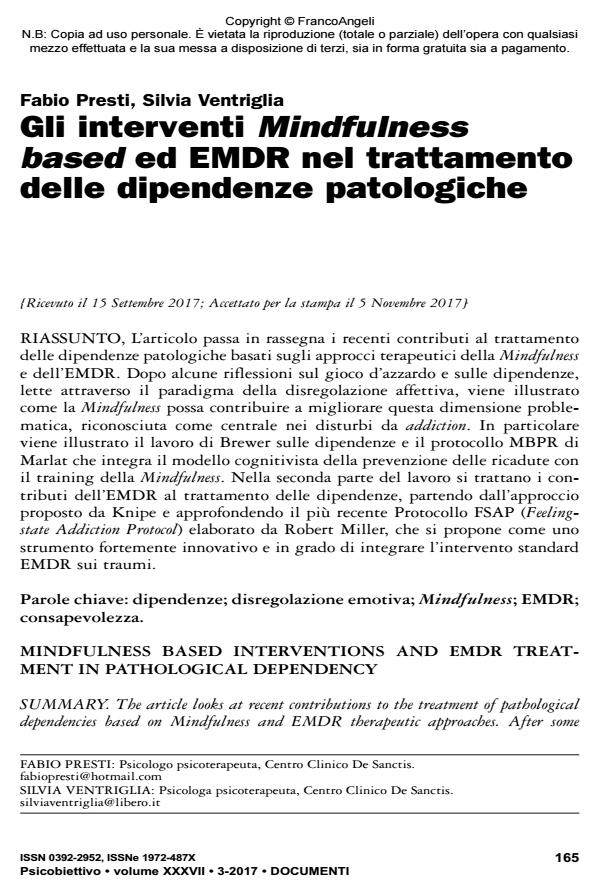Mindfulness based interventions and Emdr treatment in pathological dependency
Journal title PSICOBIETTIVO
Author/s Fabio Presti, Silvia Ventriglia
Publishing Year 2017 Issue 2017/3
Language Italian Pages 14 P. 165-178 File size 118 KB
DOI 10.3280/PSOB2017-003010
DOI is like a bar code for intellectual property: to have more infomation
click here
Below, you can see the article first page
If you want to buy this article in PDF format, you can do it, following the instructions to buy download credits

FrancoAngeli is member of Publishers International Linking Association, Inc (PILA), a not-for-profit association which run the CrossRef service enabling links to and from online scholarly content.
The article looks at recent contributions to the treatment of pathological dependencies based on Mindfulness and EMDR therapeutic approaches. After some reflections on gambling and dependencies, read through the paradigm of affective disregard, it is illustrated how Mindfulness can help improve this problematic dimension, recognized as central in addiction disorders. In particular, Brewer’s work on addiction and Marlat’s MBPR protocol is illustrated, which integrates the cognitive model of prevention for relapses with Mindfulness training. In the second part of the article, EMDR’s contributions to the treatment of addictions are discussed, starting with the approach proposed by Knipe and exploring the latest Feeling-State Addiction Protocol (FSAP) developed by Robert Miller, proposed as a powerful and innovative tool able to integrate EMDR standard intervention on traumas.
Keywords: Dependencies; Emotional Disruption; Mindfulness; EMDR; Awareness.
Fabio Presti, Silvia Ventriglia, Gli interventi Mindfulness based ed EMDR nel trattamento delle dipendenze patologiche in "PSICOBIETTIVO" 3/2017, pp 165-178, DOI: 10.3280/PSOB2017-003010